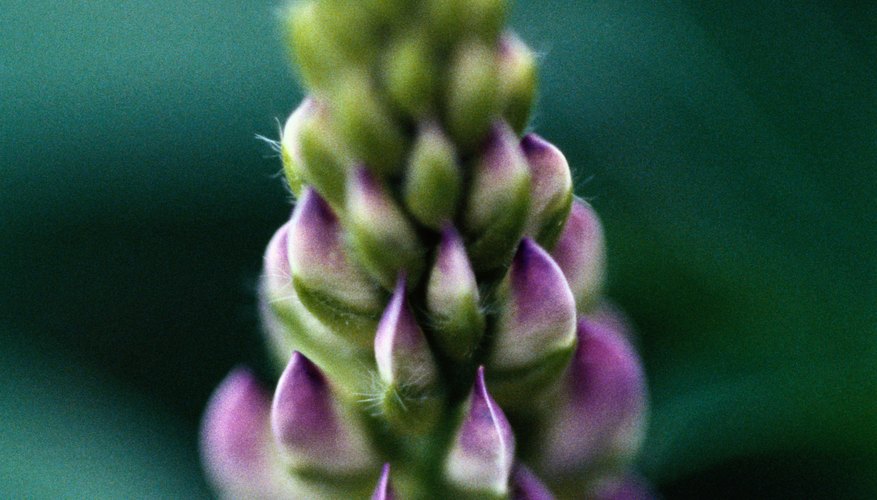Lupins (Lupinus polyphyllus), also known as lupines in the United States, brighten gardens with spikes of colourful flowers that, if plants rebloom, last all summer. Bred from the North American native species, garden lupins are short-lived hardy perennials, growing 30 centimetres tall and 75 centimetres wide. Plants cut back at the right time produce a second flush of flowers from sideshoots or from the plant base. Lupins growing in favourable conditions, kept weed-free and watered are more likely to reflower. Removing spent flowers also prevents unwanted seedlings.
Instructions
Plant lupins in spring once frosts are over. Choose an open, sunny or partially shady spot with well-drained soil. Add garden compost on chalky soils to improve alkalinity. Don't add manure lupins don't like high nutrient levels. Dry, slightly acid soils are fine.
Stake plants while young as lupins grow tall quickly and are at risk of breaking. Put down slug pellets or natural barriers to protect plants. Snails and slugs eat foliage and cause deformed buds and flowers.
Cut back flowers as soon as they begin to fade, using clean secateurs. Remove the entire stem down to the nearest bud. Cut the stem above the bud as this is where new flower spikes grow. Remove the whole stem to the base if there are no buds. Don't remove foliage even if it looks old: lupins need energy from leaves to rebloom. Second flower flushes appear in mid to late summer.
Water plants in dry weather and remove encroaching weeds to encourage reblooming. New flower spikes may need tying to stakes to stay upright.
Cover plant crowns with garden compost when leaves die back in autumn to help protect them from winter frost. Lupins live seven or eight years.
- Plant lupins in spring once frosts are over.
- Cover plant crowns with garden compost when leaves die back in autumn to help protect them from winter frost.
TIP
Saved seed often produces plants inferior to the parent. To grow new plants, cut away a small piece from the base with roots and two or three leaves attached, and plant in a pot of compost and sharp sand. Keep covered in clear plastic and lightly watered. Roots show through the base of the pot when the new plant is growing successfully.
WARNING
Don't let lupins set seed, as this diverts energy from flower production, and don't dig plants up in autumn as this can kill them. Wait until spring to transplant or divide clumps. Lupin seeds, pods and young leaves are poisonous.
